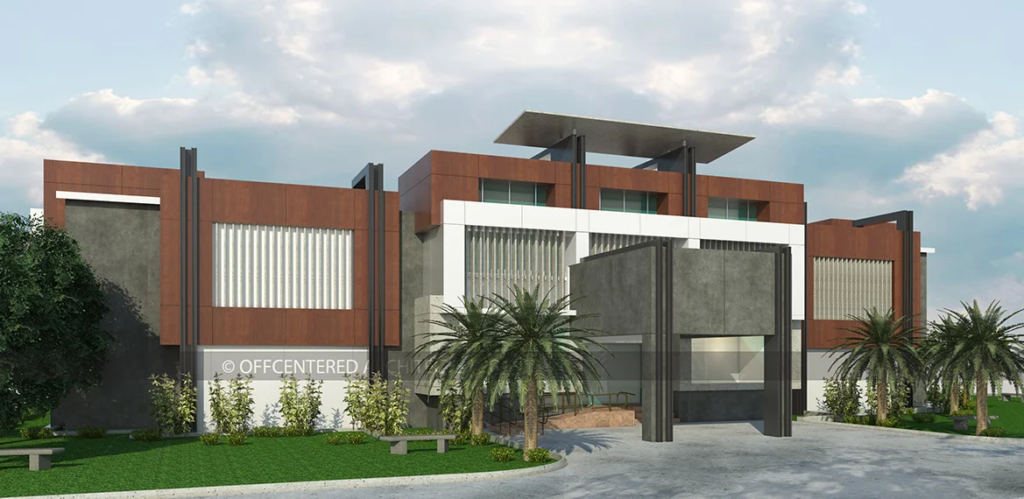
Commercial architecture firms specialize in designing buildings and structures for commercial use, such as office buildings, retail spaces, hotels, restaurants, healthcare facilities, educational institutions, and more. These firms work with clients from various industries to create functional, aesthetically pleasing, and efficient spaces that meet their specific needs and objectives. Here’s an in-depth look at what commercial architecture firms do:
1. Initial Consultation and Needs Assessment
The first step for a commercial architecture firm is to meet with the client to understand their requirements, goals, and vision for the project. This initial consultation involves discussing the purpose of the building, the intended use of the space, budget constraints, timeline, and any specific design preferences or requirements. The architect collaborates closely with the client to gather information and develop a comprehensive understanding of their needs.
2. Site Analysis and Feasibility Studies
Once the project scope is defined, the architecture firm conducts a thorough analysis of the project site to assess its opportunities and constraints. This may include studying the site’s topography, climate, environmental conditions, zoning regulations, and accessibility. Feasibility studies are conducted to evaluate the viability of the project and identify potential challenges or opportunities that may impact the design and construction process.
3. Conceptual Design and Programming
Based on the client’s requirements and site analysis, the architect develops initial design concepts and programming documents. These documents outline the spatial requirements, functional relationships, and overall design intent for the project. The architect collaborates with the client to refine the design concept, exploring different ideas and options to achieve the desired outcome. This phase may involve sketches, diagrams, and 3D visualizations to communicate design ideas effectively.
4. Schematic Design
Once the conceptual design is approved, the architect moves on to the schematic design phase. During this stage, the design is further developed and refined to establish the overall form, layout, and spatial organization of the building. The architect creates floor plans, elevations, and sections to illustrate the proposed design. Consideration is given to factors such as circulation, daylighting, building orientation, and sustainability strategies to optimize the building’s performance and user experience.
5. Design Development
After the schematic design is finalized, the architect proceeds to the design development phase. In this stage, the design is fleshed out in greater detail, and technical aspects such as building systems, materials, and construction methods are refined. The architect collaborates with engineers, consultants, and other stakeholders to integrate structural, mechanical, electrical, and plumbing (MEP) systems into the design. Specifications and material selections are also finalized during this phase.
6. Construction Documents
Once the design development is complete, the architect prepares comprehensive construction documents that serve as the blueprint for building construction. These documents include detailed drawings, specifications, schedules, and other technical information required for bidding, permitting, and construction. The architect ensures that the construction documents comply with building codes, regulations, and industry standards to facilitate a smooth construction process.
7. Bidding and Contractor Selection
Commercial architecture firms assist clients in soliciting bids from qualified contractors and selecting the most suitable contractor for the project. The architect helps prepare bid packages, review contractor proposals, and negotiate contracts on behalf of the client. During this phase, the architect acts as the client’s advocate, ensuring that the selected contractor understands the project requirements and can deliver the desired quality within the specified budget and timeline.
8. Construction Administration
Throughout the construction phase, the architect provides ongoing support and oversight to ensure that the project is built according to the design intent and specifications. This involves conducting site visits, reviewing submittals, addressing requests for information (RFIs), and coordinating with the contractor and other project stakeholders. The architect serves as the client’s representative on-site, monitoring progress, resolving issues, and ensuring that the project meets quality standards and contractual obligations.
9. Post-Occupancy Evaluation
After the building is completed and occupied, the architect may conduct a post-occupancy evaluation to assess the performance of the design and gather feedback from users. This evaluation helps identify areas for improvement and informs future design decisions. The architect collaborates with the client to address any issues or concerns that arise during the occupancy phase and ensure the long-term success of the project.
10. Sustainable Design and Certification
Many commercial architecture firms specialize in sustainable design practices and can help clients achieve green building certifications. These firms integrate sustainable design principles, energy-efficient technologies, and environmentally friendly materials into their projects to minimize environmental impact, reduce operating costs, and enhance occupant comfort and well-being.
Find the best firms for commercial design architecture
In summary, commercial architecture firms provide a wide range of services to clients seeking to design and construct commercial buildings and structures. From initial consultation and conceptual design to construction administration and post-occupancy evaluation, these firms guide clients through every stage of the architectural process, ensuring the successful realization of their vision. With their expertise in design, technical knowledge, and project management skills, commercial architecture firms play a crucial role in shaping the built environment and creating spaces that meet the needs of businesses, organizations, and communities. To know more or to find the best firms for commercial design architecture, please visit the website.